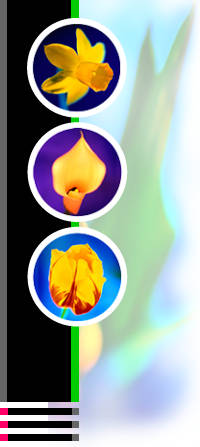 |
|
|||||||||||||||||||||||
|
This brief essay can also be found at The Radical Georgia Moderate. Click here to go there I Know
Why the Caged Bird Sings By:
Maya Angelou While surfing a literary forum I happened upon a post inquiring as to the meaning behind
the following four lines of verse. The words had considerable appeal so I left some comments. The caged bird sings with a fearful trill Having never seen those words before and not knowing from whence they came I ascertained
the identity of their author and learned that Maya Angelou is a well-respected black author of some notoriety. Those
four lines turned out to be part of a poem entitled I know Why The Caged Bird Sings, which had initial appeal;
certainly relative to the message I believed was being sent by a black woman who fought for racial freedoms. With my
interest picked I undertook to write my reaction to the following poem as to "why" the caged bird sings and immediately
ran into all sorts of trouble.
I Know Why The Caged Bird Sings The free bird leaps My first problem had to do with my lawyer mind sorting out what Maya's poem was about, i.e. a
“singing bird in a cage," or "the freedom of a singing bird in a cage." Those two concepts can be dramatically
different inasmuch as the bird may very well sing simply because it is genetically programmed to do so, especially when in
the presence of a bird of the opposite sex during mating season. In such an instance an answer to the "why" question
as relates to singing can be easily imagined. As to the freedom concept the philosophical discussion regarding the "Allegory of the Cave"
comes to mind. Translated to bird talk, a bird born into captivity learns that small world to be its reality, consequently
flittering about the cage represents a total freedom. To the caged bird the world outside the cage constitutes nothing
more than pictures on a wall as in the Allegory of the Cave. Inapposite, the so called free bird floating downstream on the back of the wind still has
its chains, its wings are not large enough to fly as high as it can see nor are they streamlined enough to fly as far as others
who fly south for the winter. So, it too, is locked into a prison of sorts by not being able to fly high enough
or far enough. Its wings might just as well be clipped for it too lives in a cage with each bar of the cage put there by each
linear strand of its parents DNA. So does Maya want me to believe that a bird, fed well enough to sing in a cage, is
crying for the same freedom enjoyed by the free bird floating downstream on the back of the wind. My answer is that neither
bird has the wherewithal to understand their freedom or limitations thereof; poetic license notwithstanding. In furtherance of that postulate, I would rather wonder why, before going
to sleep at night, a black man born into slavery sings in his slavery quarters. The bird is not sentient; the black man
is, so it is the consciousness of reality that gives the concept of singing and freedom a meaning. Thus, I think the metaphors,
Maya used to send the message of singing for freedom, are both contradictive and malapropos. It may well be that living in
a cage is not in the best interests of a bird species well known to fly and flitter about in the wild but the bird cannot
so reason. Most if not all the times in my life where I presumed to know what was best for another
person proved to be in error because what I wanted for them was something they often did not want for themself. That
said, humans are a species I know a little something about, but of how a bird thinks, I know nothing. |
|||||||